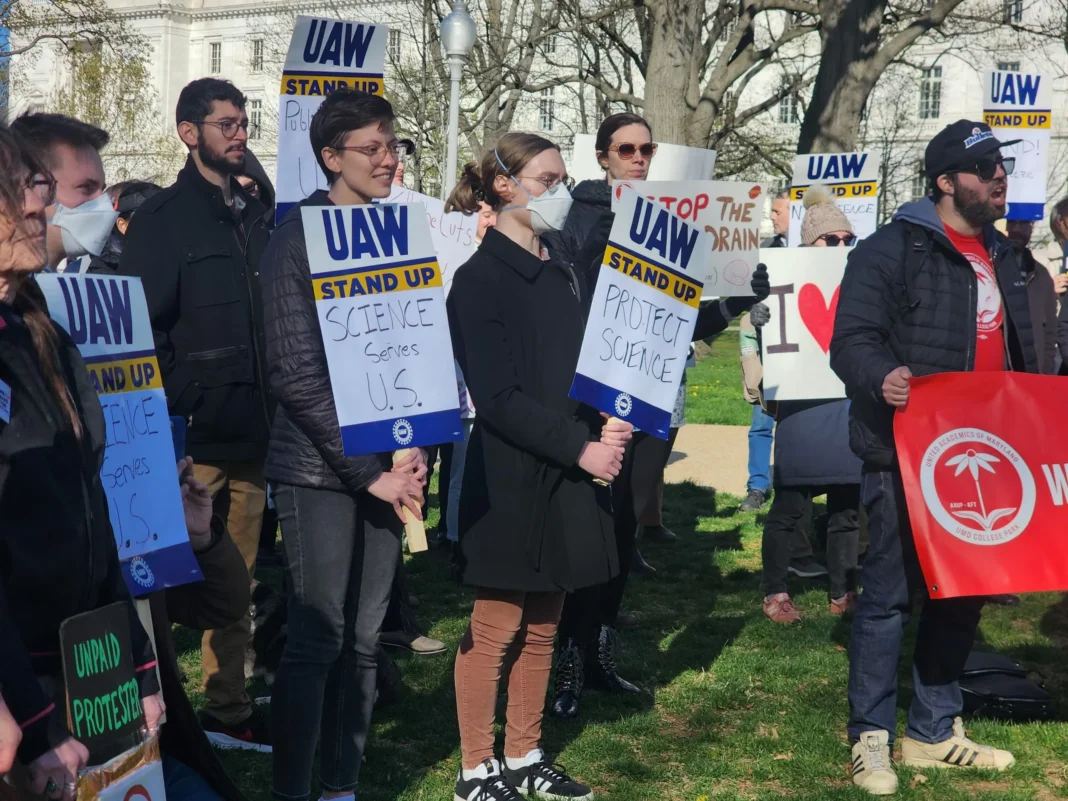On April 8, thousands of people across the United States took to the streets to protest the Trump administration’s proposed budget cuts. The national ‘Kill the Cuts’ rallies, organized by various unions, aimed to bring attention to the devastating impact these cuts would have on life-saving research, healthcare, and education programs.
The rallies, which took place in major cities such as Washington D.C., New York, and Los Angeles, were a powerful display of unity and determination. Union members, activists, and concerned citizens came together to send a clear message to the government: these cuts are unacceptable and will not be tolerated.
One of the main targets of these budget cuts is the National Institutes of Health (NIH), which funds critical medical research. The proposed budget would slash $5.8 billion from the NIH, jeopardizing the progress and advancements made in finding cures for diseases such as cancer, Alzheimer’s, and HIV/AIDS. This is not just a matter of numbers and figures, but it directly affects the lives of millions of Americans who rely on these life-saving treatments.
In addition to the cuts to medical research, the proposed budget also includes significant reductions to healthcare programs such as Medicaid and Medicare. These programs provide vital support to low-income families, the elderly, and people with disabilities. Cutting funding to these programs would leave many vulnerable individuals without access to essential healthcare services.
Education is another area that would be severely impacted by these cuts. The proposed budget would eliminate funding for after-school programs, teacher training, and student loan forgiveness programs. This would have a devastating effect on students and educators, hindering their ability to receive a quality education and pursue their dreams.
The ‘Kill the Cuts’ rallies were not just about protesting the proposed budget cuts, but also about standing up for the values that make America great. The Trump administration’s budget priorities do not align with the needs and priorities of the American people. We believe in investing in our future, in the health and well-being of our citizens, and in providing equal opportunities for all.
The rallies were a powerful reminder that when we come together and raise our voices, we can make a difference. The energy and passion displayed by the participants were truly inspiring. It showed that we are not willing to sit back and watch as our government makes decisions that will harm our communities and our country.
The ‘Kill the Cuts’ rallies also highlighted the importance of unions in protecting the rights and interests of workers. Unions have been at the forefront of fighting for fair wages, safe working conditions, and access to healthcare and education. These rallies were a testament to the strength and unity of the labor movement and its commitment to standing up for what is right.
As we move forward, it is crucial that we continue to raise our voices and demand that our government prioritize the needs of its citizens. We must hold our elected officials accountable and remind them that they work for us, not the other way around.
In conclusion, the national ‘Kill the Cuts’ rallies were a powerful display of unity and determination in the face of proposed budget cuts that would have a devastating impact on our society. We must continue to stand together and fight for a better future for all Americans. Let us not forget the power of our voices and our ability to bring about change. Together, we can ‘kill the cuts’ and build a stronger, more equitable nation.


